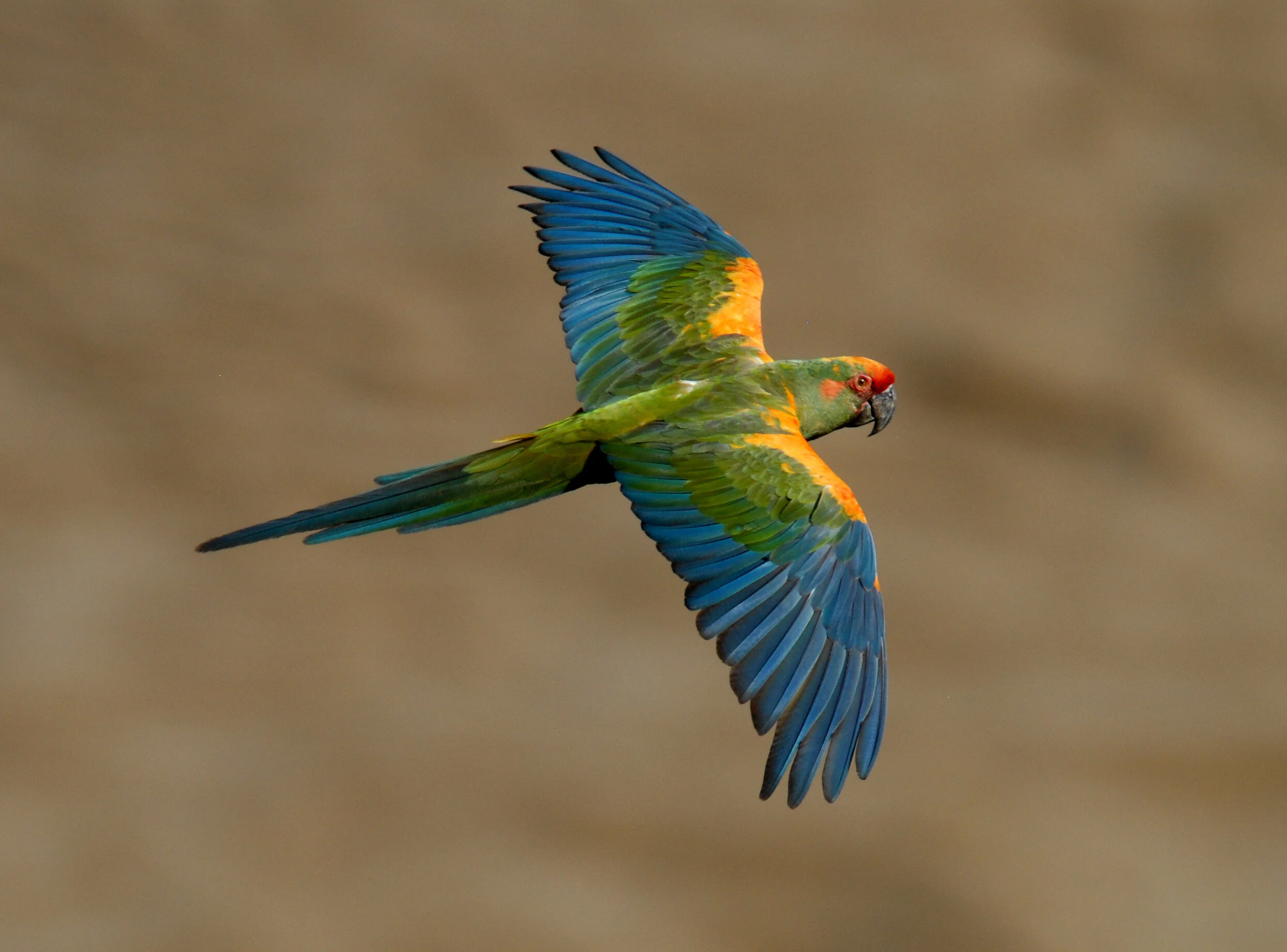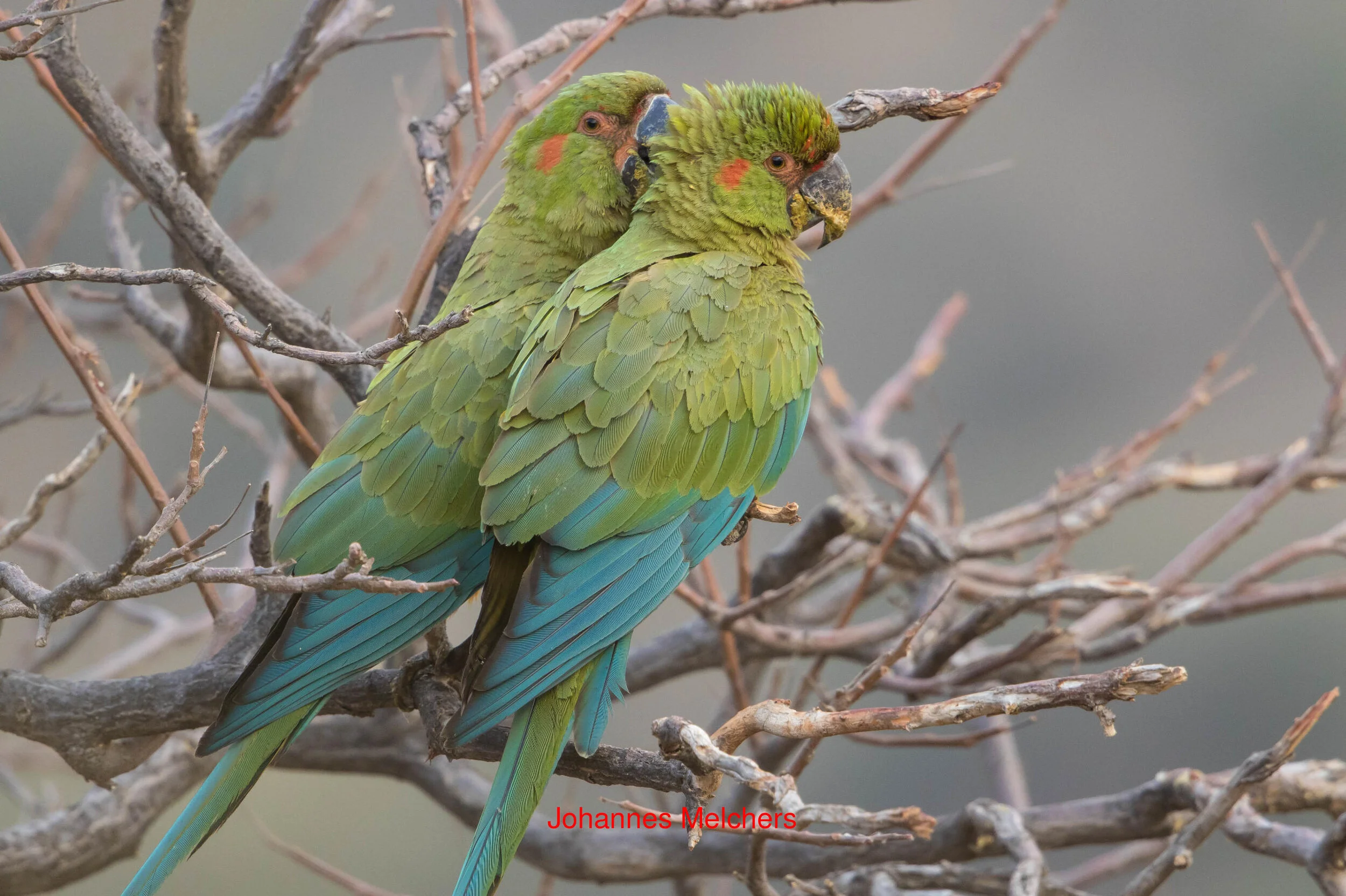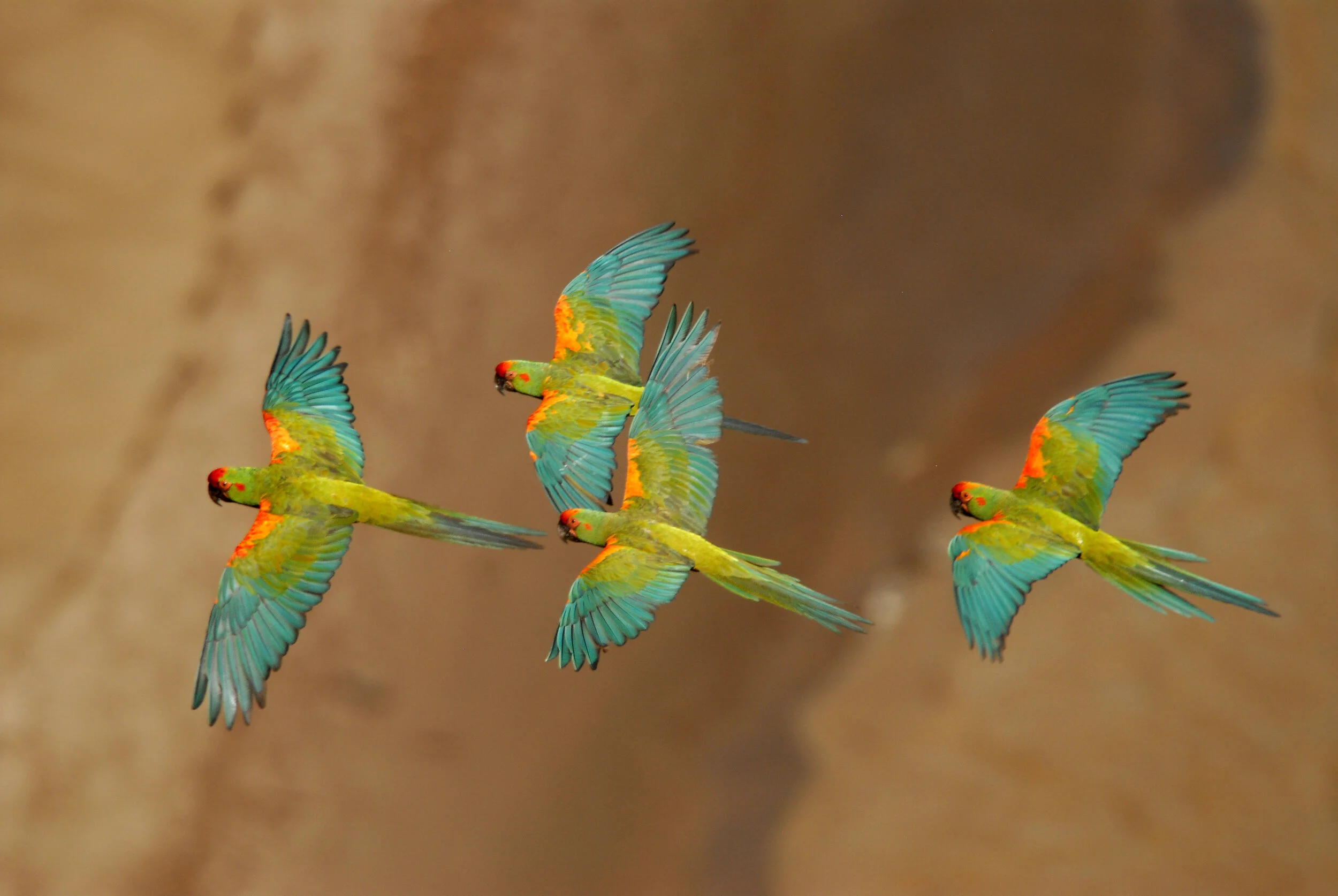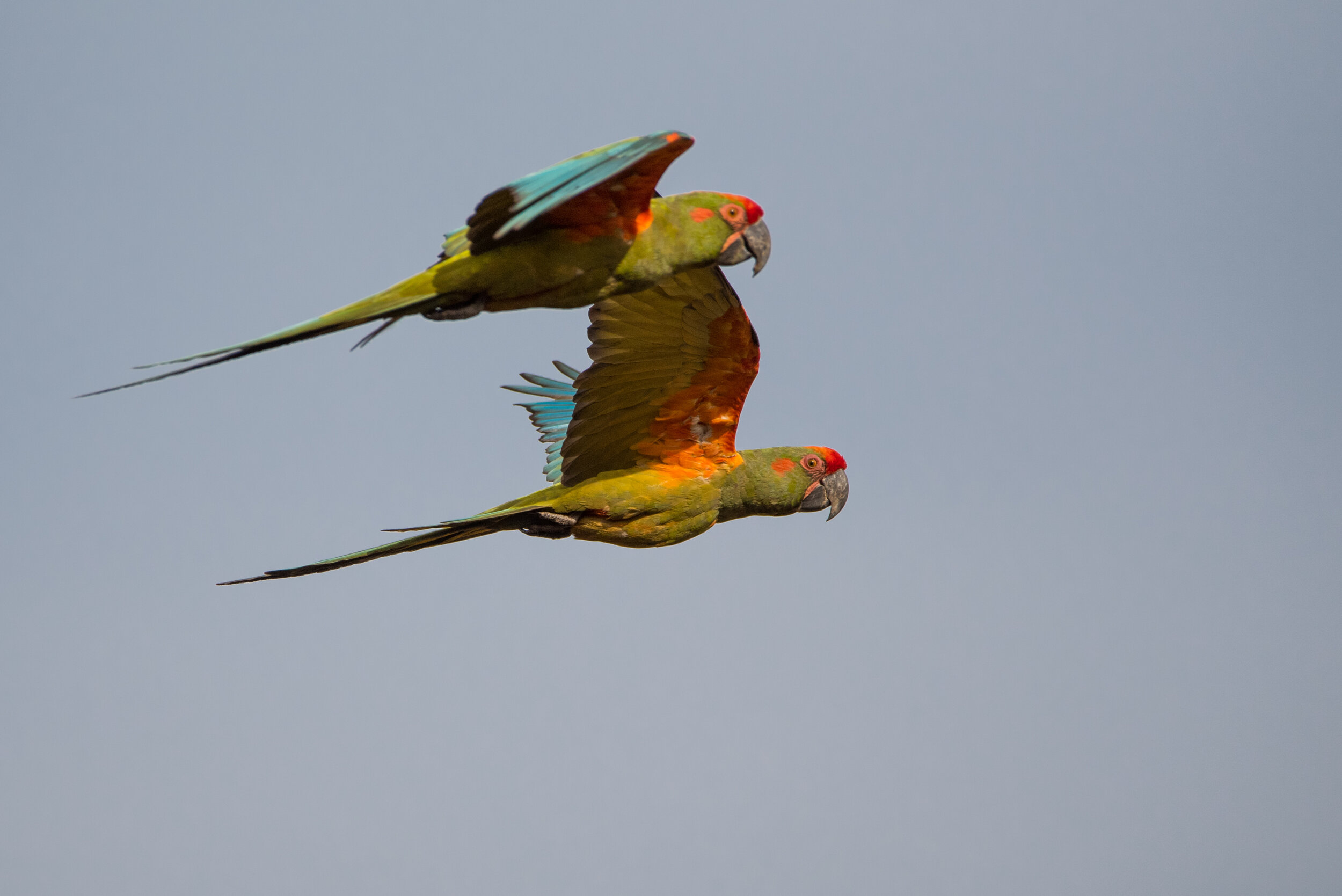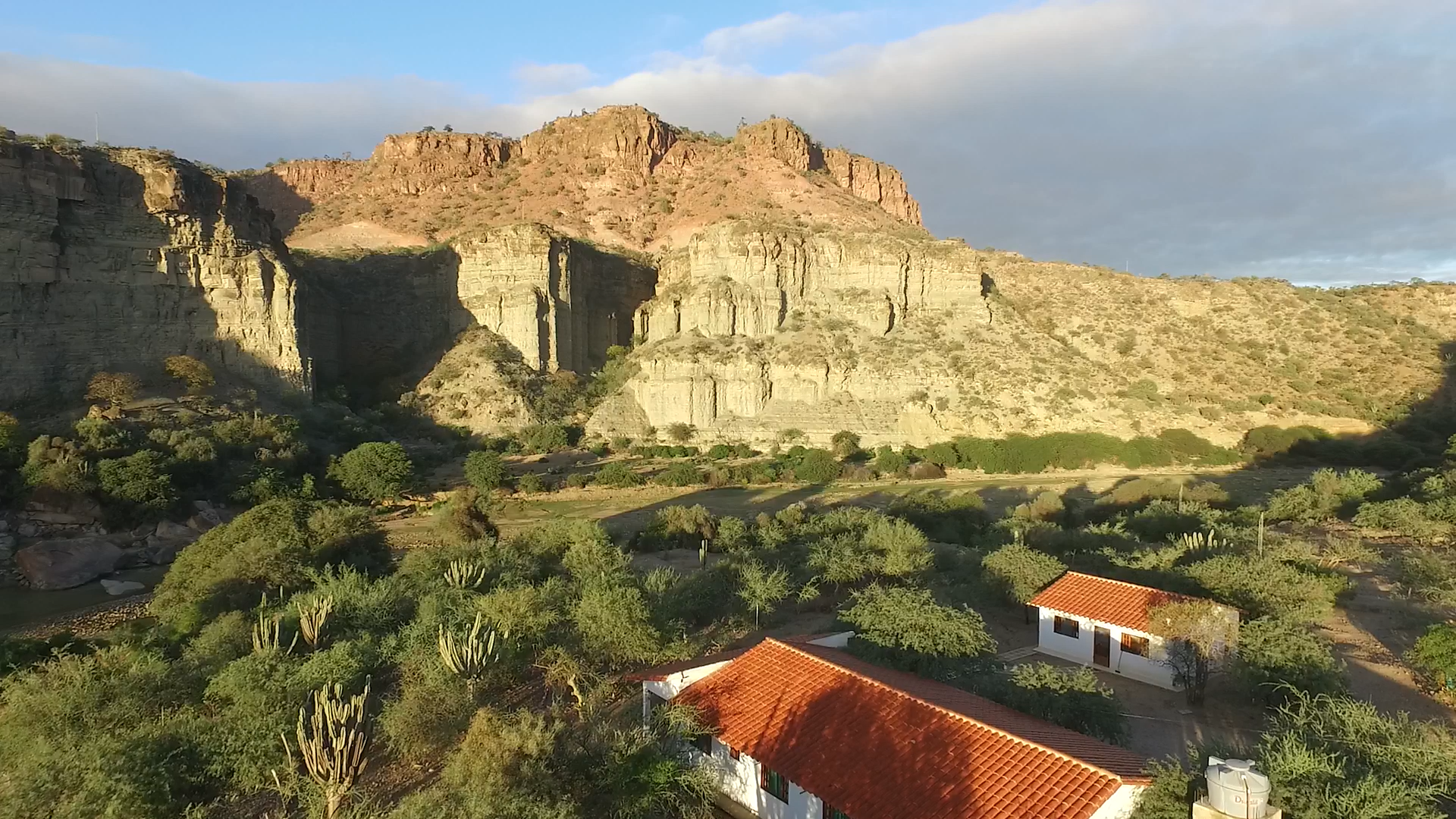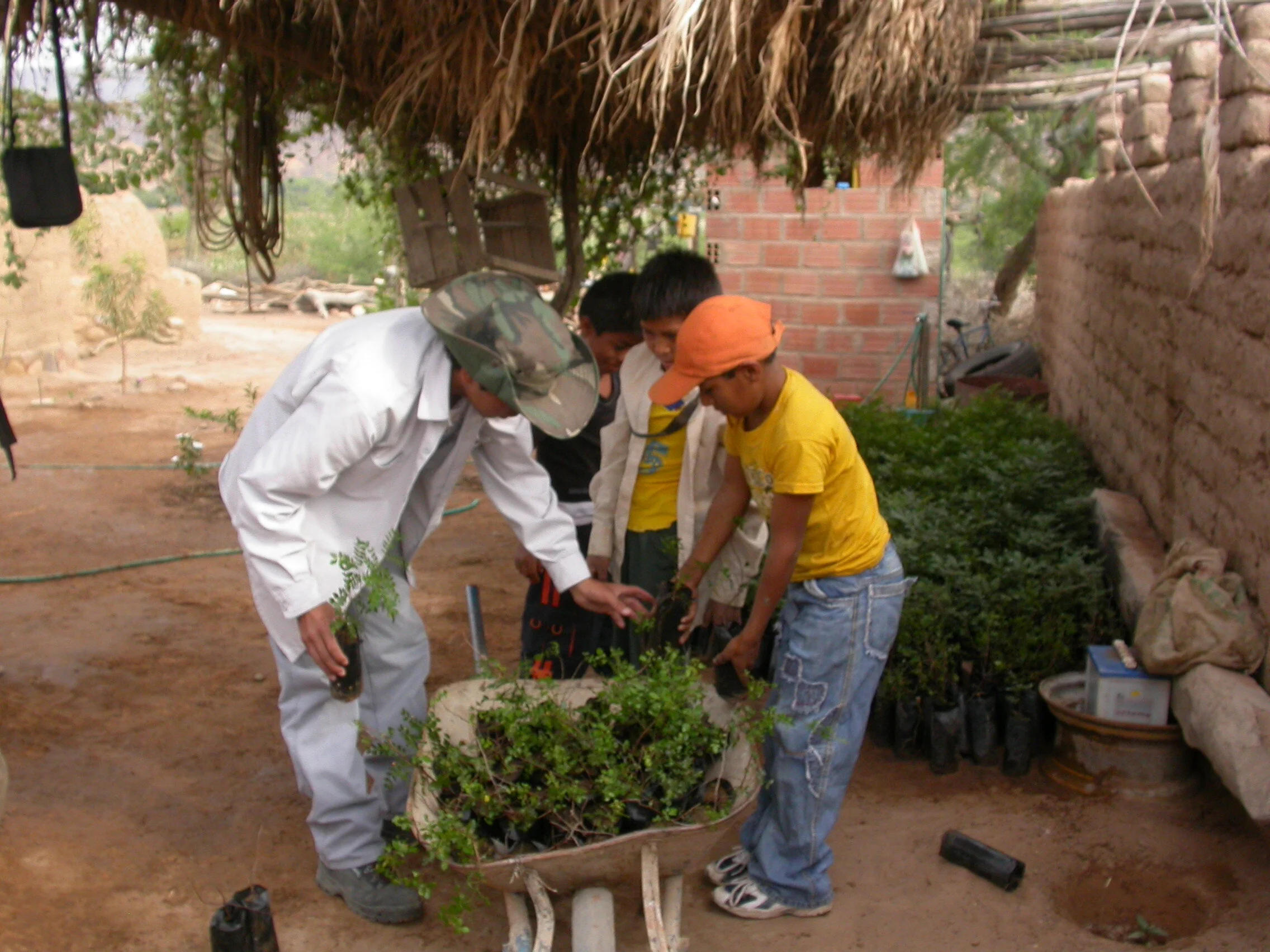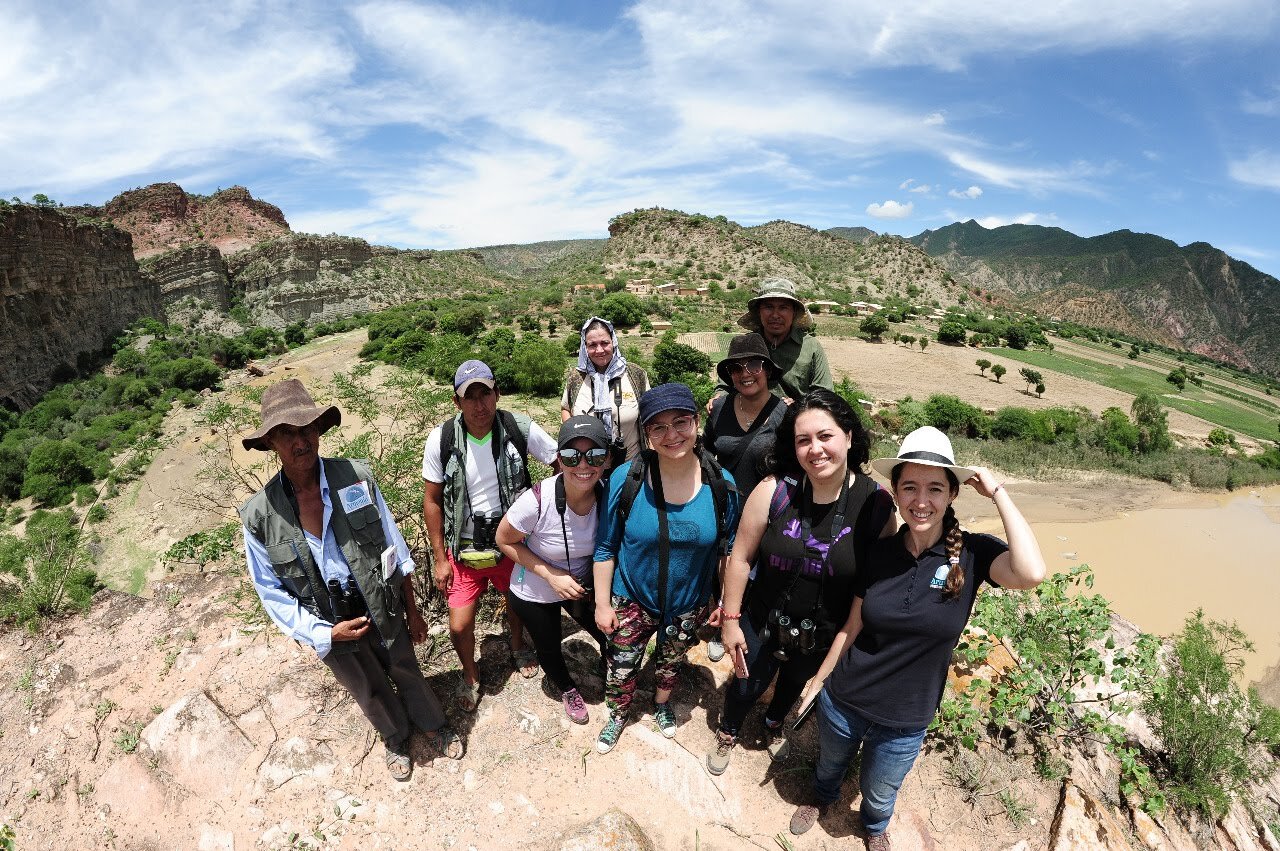Bolivia
Red-fronted Macaw, a globally critically endangered endemic to Bolivia with fewer than 1,000 remaining in the wild.
Creating more breeding cavity options to increase the Red-fronted Macaw population
Introduction
The Bird Conservation Fund was able to provide $5,500 to the Bolivian non-profit Asociacion Armonía to build, install and monitor nesting boxes for the critically endangered Red-fronted Macaw. The entire global population for this magnificent bird is between 800 and 1000 individuals in the wild. The population is decreasing due to continuous illegal pet trade in the Caine region, habitat destruction, and killing of macaws as they are considered a crop pest.
Most of the inter-Andean original dry forest habitat has been destroyed due to human activity. The region’s vegetation has been converted to thorny shrubs, cactus, and scattered trees. The macaw's roost and breed at isolated steep-sided river cliffs at the Mizque, Caine, Rio Grande, and Pilcomayo River Basins. Most of the macaw’s natural food sources are becoming scares as fruiting trees are being harvested and their natural regeneration halted due to unsustainable goat management and changing climate conditions. Therefore, the macaws tend to feed on peanut and corn crops as an alternative food source where they are considered a pest.
This project will be carried out in the Red-fronted Macaw Community Reserve located in the Cochabamba Department in the heart of the Bolivian Dry Andean Valleys between 1,850 and 2,400 m. Located within the KBA (Key Biodiversity Area) “Cuencas de los ríos Caine y Mizque”, the Red-fronted Macaw Reserve protects the most important breeding sites for the Critically Endangered and Bolivian endemic Red-fronted Macaw. This KBA is also home to numerous range restricted birds (Cliff Parakeet, Bolivian Earthcreeper, Bolivian Blackbird), and the second most important global center of endemism for Cactaceae.
Action
Armonía will place 10 artificial breeding boxes at the Red-fronted Macaw Reserve to double the number of key breeding holes for the Red-fronted Macaw. There is a clear limited number of good breeding cavities in the rock cliff face. They propose to experiment with well position nest boxes (6 cement-based boxes and 4 wooden boxes) on the cliff face offering more nesting options for the Red-fronted Macaw.
Prior to creating nest boxes they will evaluate the most successful nesting sites with a “burrowscope” to better understand the shape and requirements of the nests. This will provide valuable information on how to imitate the nests. In addition, they will place camera traps to study the macaws breeding biology to improve the nest box program over time.
Armonía is also training key community members on gathering important breeding biology data at the Red-fronted Macaw breeding cliff. Through training and direct collaboration, they will become more involved in the program to protect the Red-fronted Macaw population at the Reserve.
Outcome
Macaws that are acquainted with breeding in nest boxes or have fledged from nest boxes tend to return using them. Armonía has observed this with the Critically Endangered Blue-throated Macaw where over 90 chicks have fledged from Armonía’s nest boxes over a period of 15 years. They will experiment with different nesting boxes and based on the breeding results we will refine the box type. Proven successful, we will replicate nest boxes throughout the species breeding range to further increase population numbers.

